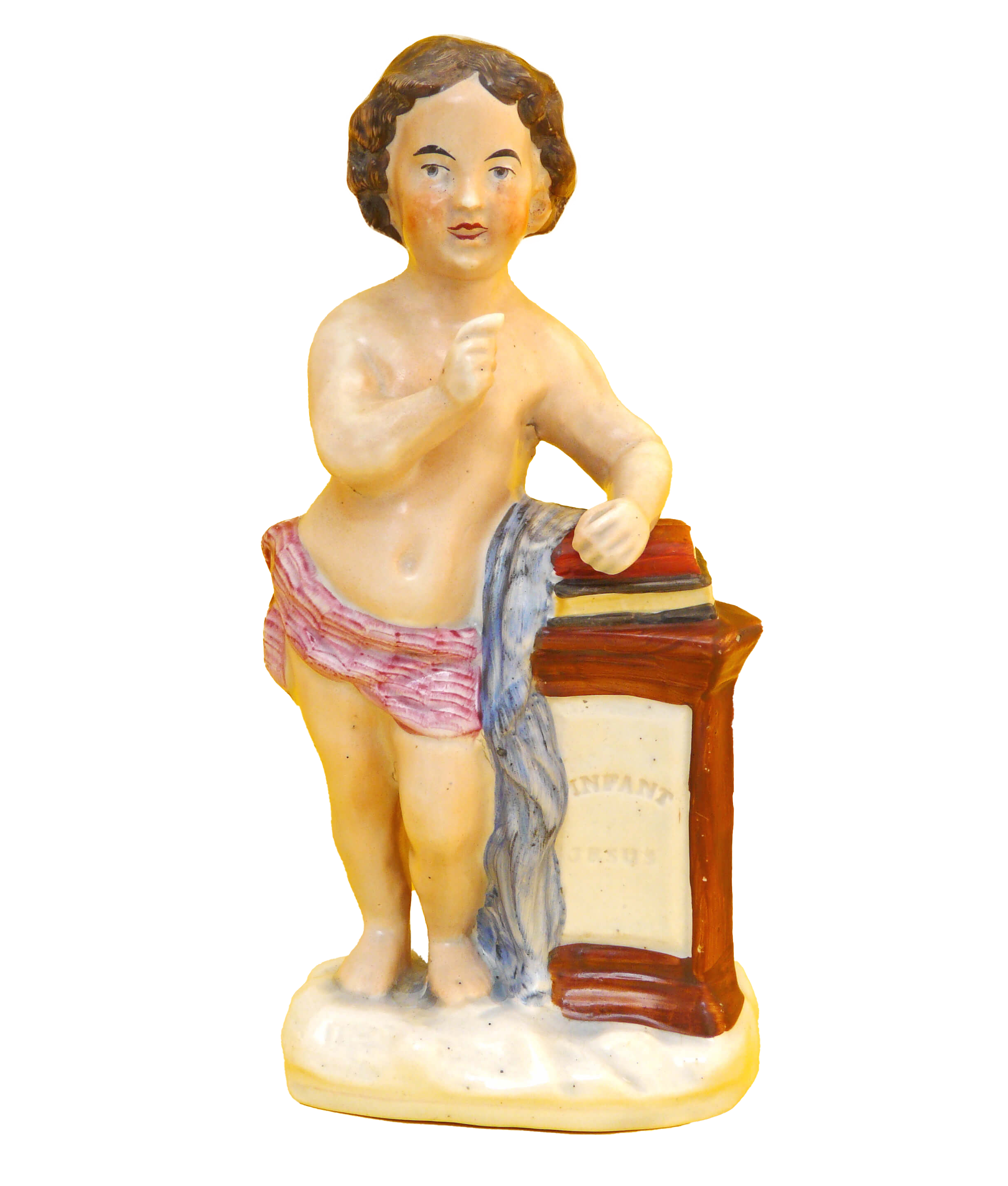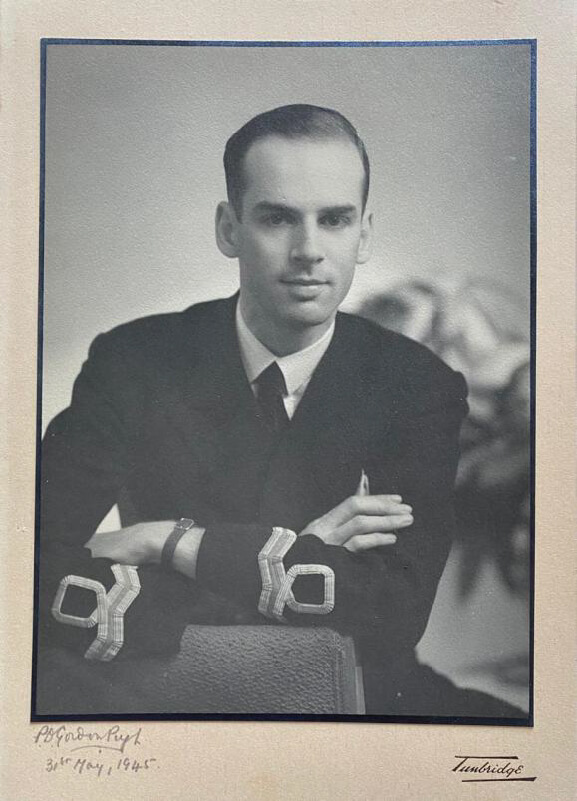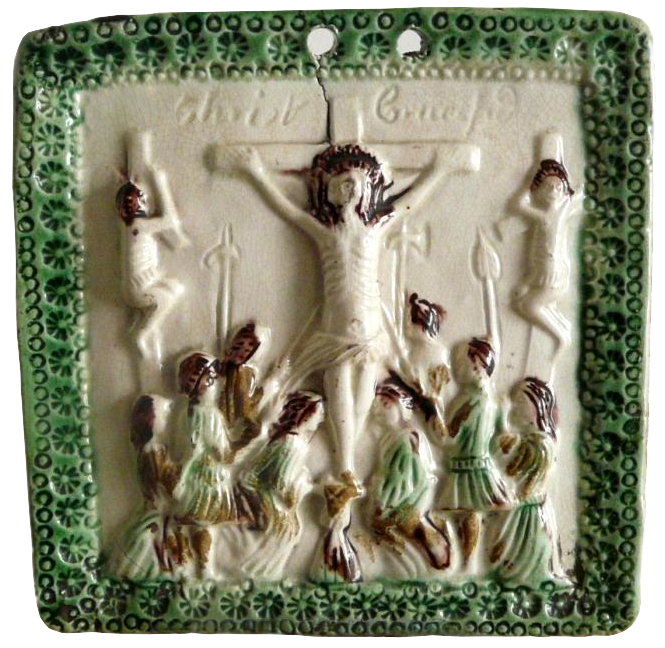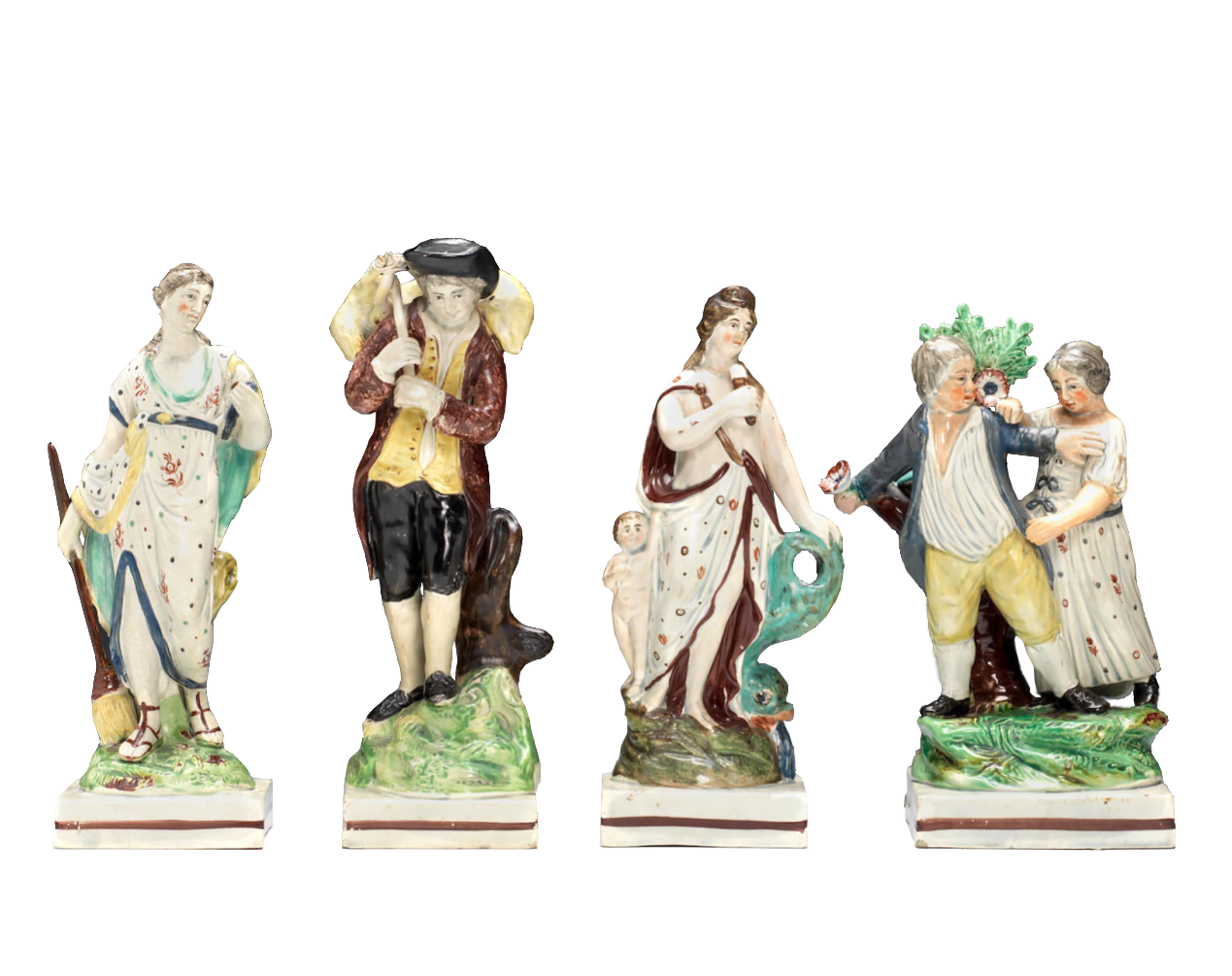Two of the New Testament Gospels, Matthew and Luke, describe the birth of Jesus. Two separate Parian figures show the angel Gabriel who came to announce the birth of Jesus to his mother Mary who receives the news humbly and joyfully.


The Victorian Staffordshire potters did not show this scene, which is commonly depicted in Western art. They do however show Mary pregnant. A further pottery figure of ‘Mary and the serpent’ shows her standing with arms outstretched, trampling on a writhing green snake. An apple lies on the ground.
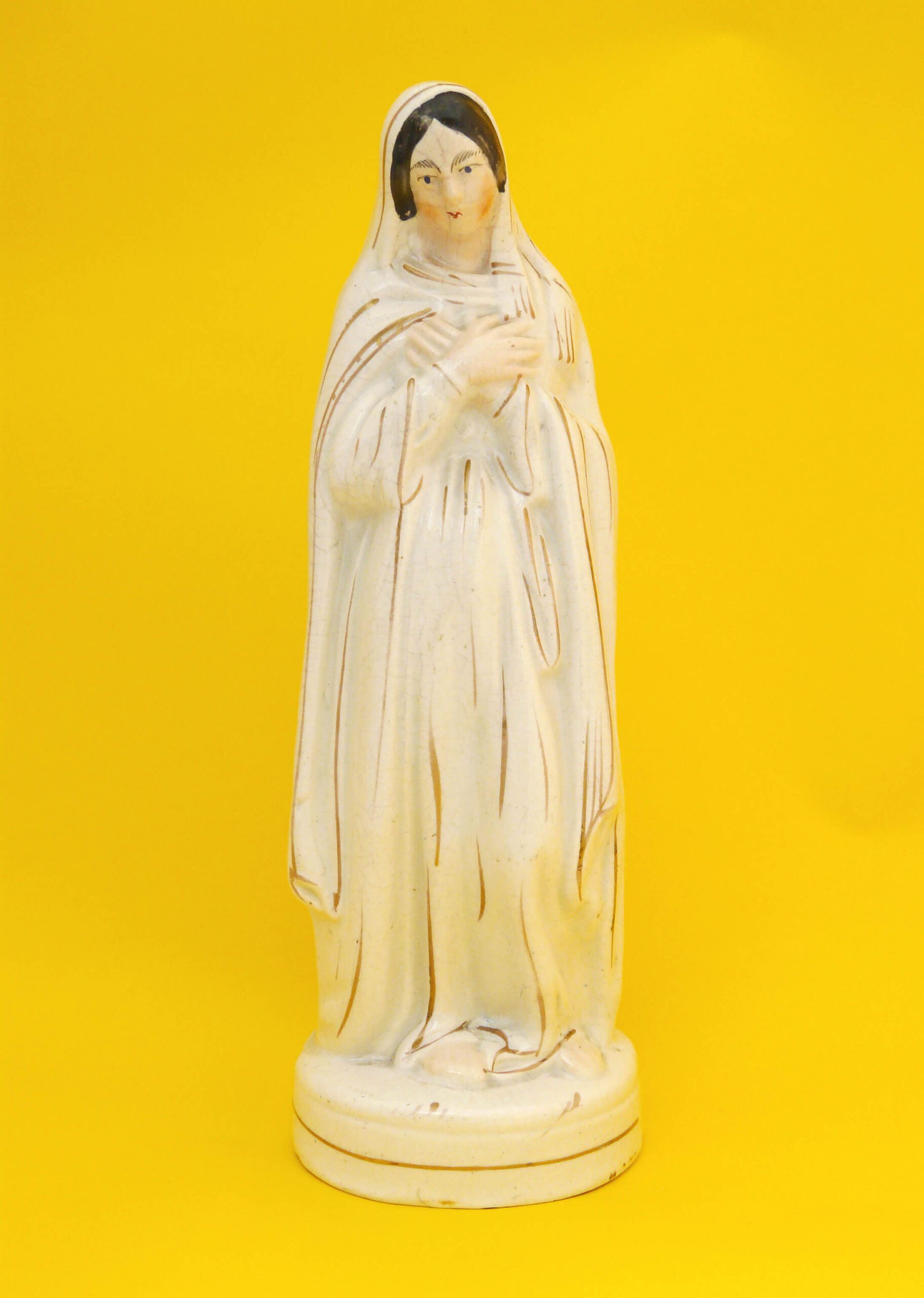
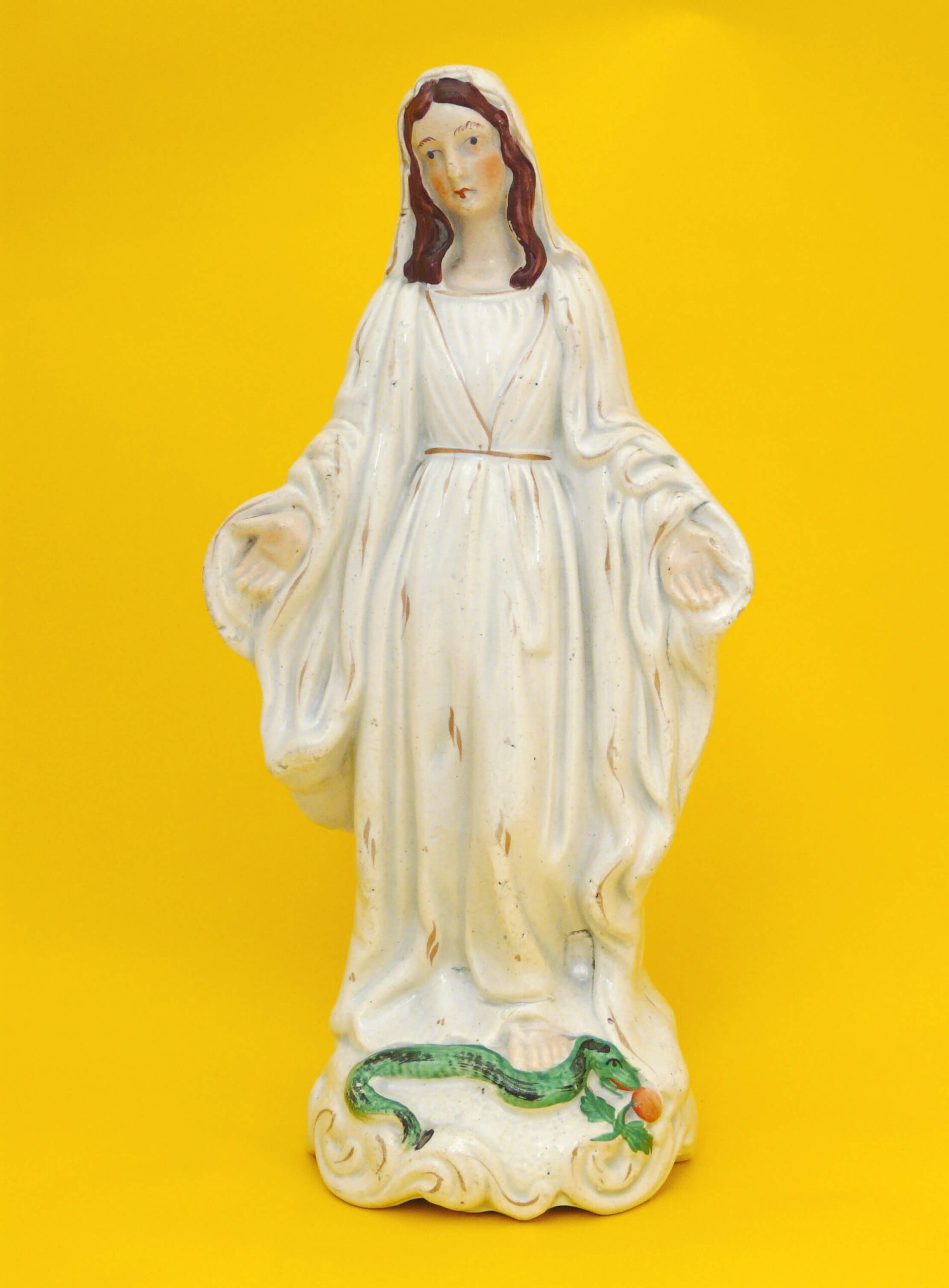
This graphically depicts what Catholics see as the prophecy about the serpent contained in Genesis 3 v.15 (the Latin rather than the Hebrew version): “I will put enmities between thee and the woman, and thy seed and her seed; she shall crush thy head, and thou shalt lie in wait for her heel.” Following the temptation of Eve with an apple by the serpent in the Old Testament, now Mary is seen as fulfilling this prophecy, sharing in the victory over sin which Jesus’ coming will bring.

In Winchester Cathedral in southern England, a Burne Jones stained glass window design created originally for Castle Howard stately home in 1874 shows a scene of the annunciation with a serpent wound round a tree between the angel and Mary, thus making a similar link.
Jesus’ birth took place during the time of Caesar Augustus, the first Roman Emperor, who ruled from 31 BC to AD 14. A census was held, probably for taxation purposes, and Joseph and the pregnant Mary travelled from their home in Nazareth to Bethlehem, the royal city of David, a few miles south of Jerusalem. Jesus is born and in Luke’s narrative is visited by shepherds, while in Matthew’s narrative wise men or astrologers from the East are looking for the new born king of the Jews.
The potters did not show the birth of Jesus in a stable, though again this is common in Western art. In a well modelled figure however they do show Mary carrying the baby Jesus, with a donkey alongside. Mary is shown in several different models with the infant child. One of ‘Mary and the Christ child’ which is 14” high probably derives from the Parr factory.


Her husband Joseph, a descendant of King David, appears in three figures, two carrying the child and one on his own. It is unusual to find Joseph depicted carrying Jesus, but the scene also occurs in a Victorian stained glass window in Ross on Wye parish church, Herefordshire.

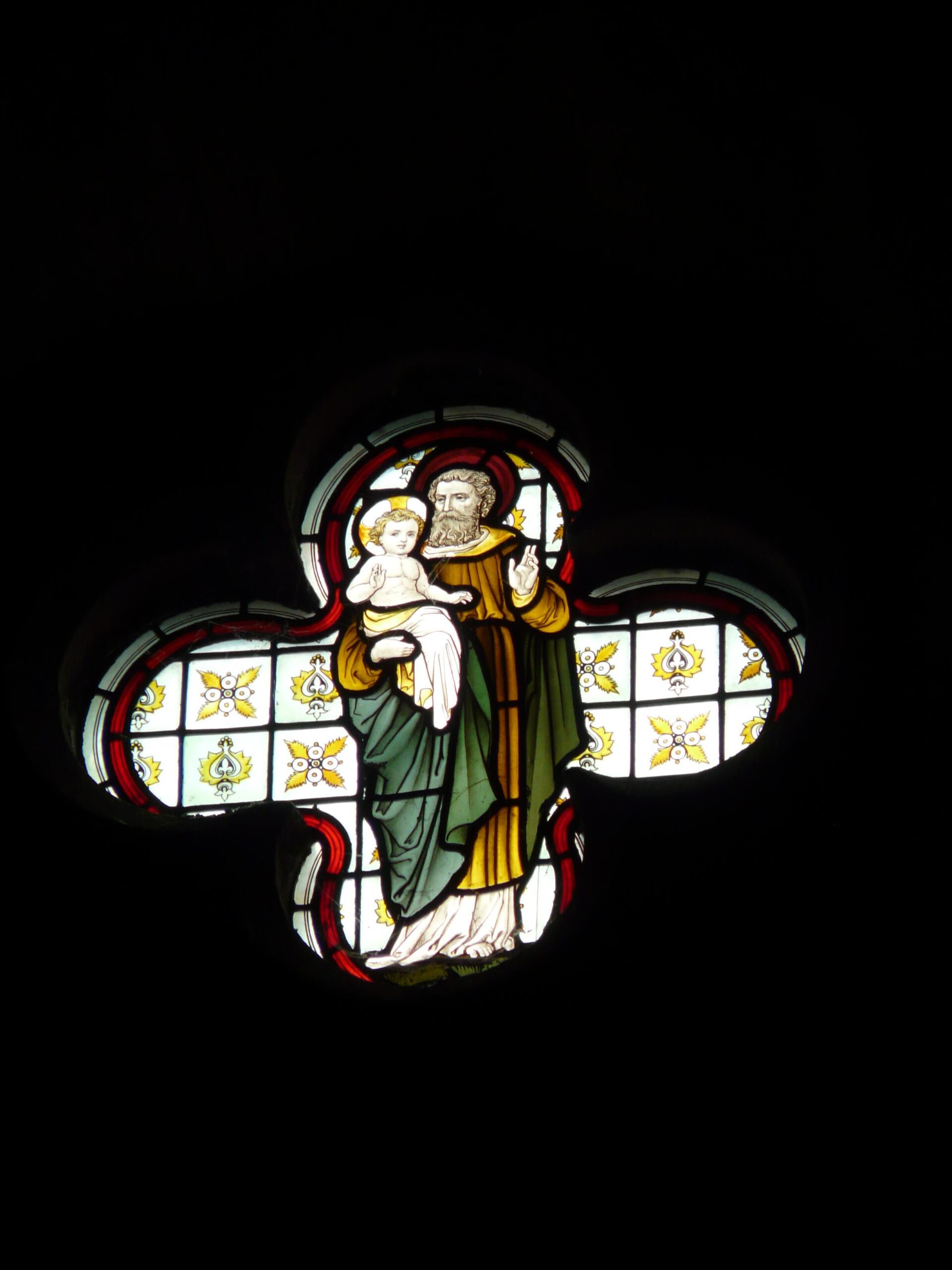
The largest figure of the three (depicted above) is extremely rare and shows Joseph not only carrying Jesus but also a thin stem with flowers in his right hand. This imagery comes from apocryphal gospels (not the authorised version of the Bible) and relates to Joseph being chosen as Mary’s husband because the rod he brought to the temple burst into flower, whereas those of other suitors remained barren. Similar images of Joseph appear in some Roman Catholic churches, where the story is not treated as a revealed truth but nevertheless confirms Joseph as also chosen of God.
The local ruler Herod is alarmed to hear of the purpose of the astrologers’ search which leads him to order the massacre of all boys aged two years or under in the Bethlehem district. Joseph had been warned of this by an angel in a dream and so he and Mary fled to Egypt to save Jesus’ life.
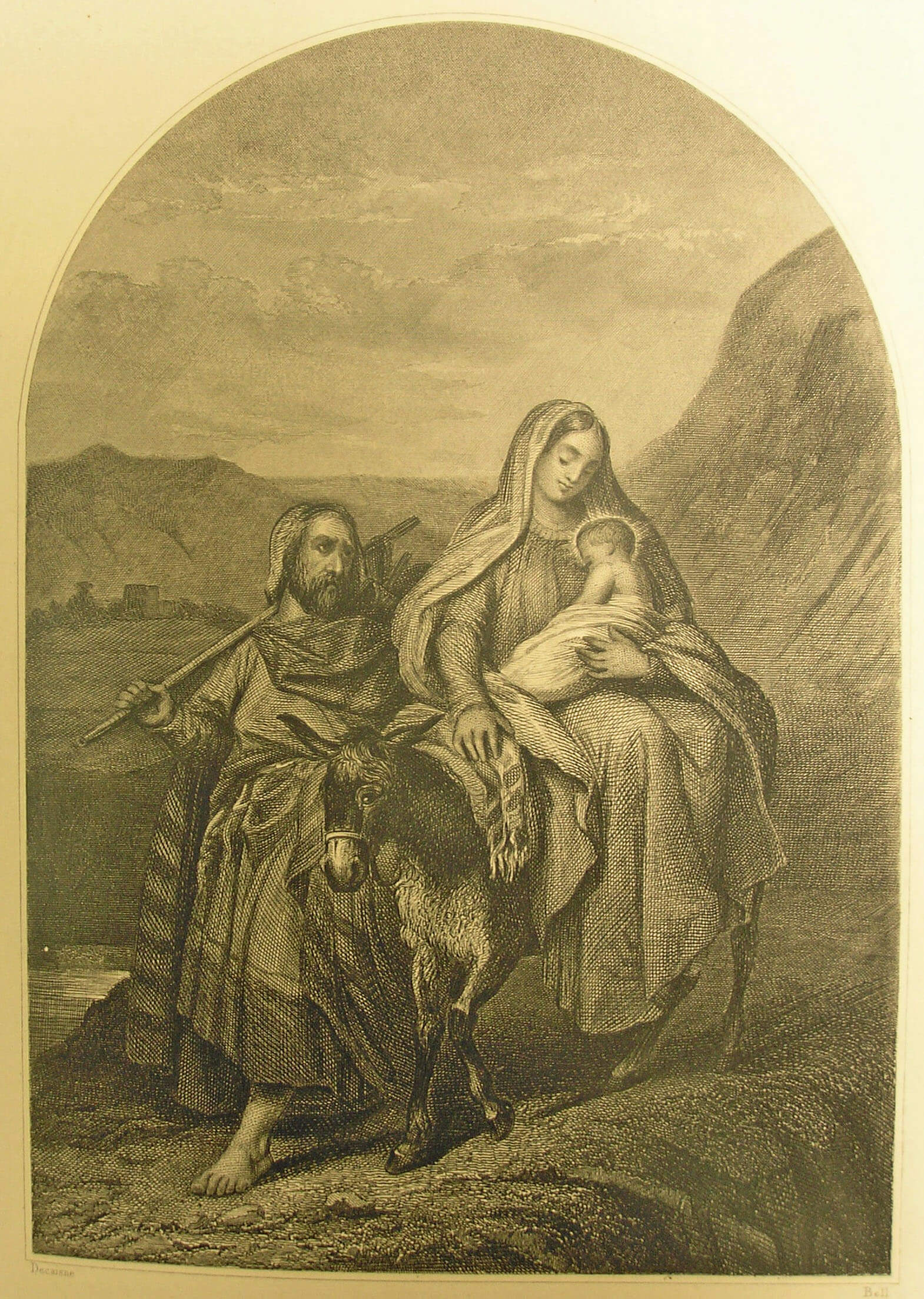



The Staffordshire potters earlier in the nineteenth century made figures both of this ‘Flight to Egypt’, and of the later return of Jesus as a young boy once Herod was dead. In Victorian times only the ‘Flight to Egypt’ appears to have been modelled. As you can see above, three very different figures were produced – no doubt by different potteries. In each Joseph leads the donkey on which Mary is seated side saddle with the child. Joseph is bearded in all three but his figure ranges from young man to balding elder! At different times in history, Western art has portrayed him with a similar range of ages.
A final figure from this period of Jesus Christ’s life shows him as a rather chubby little boy, clearly named INFANT JESUS.
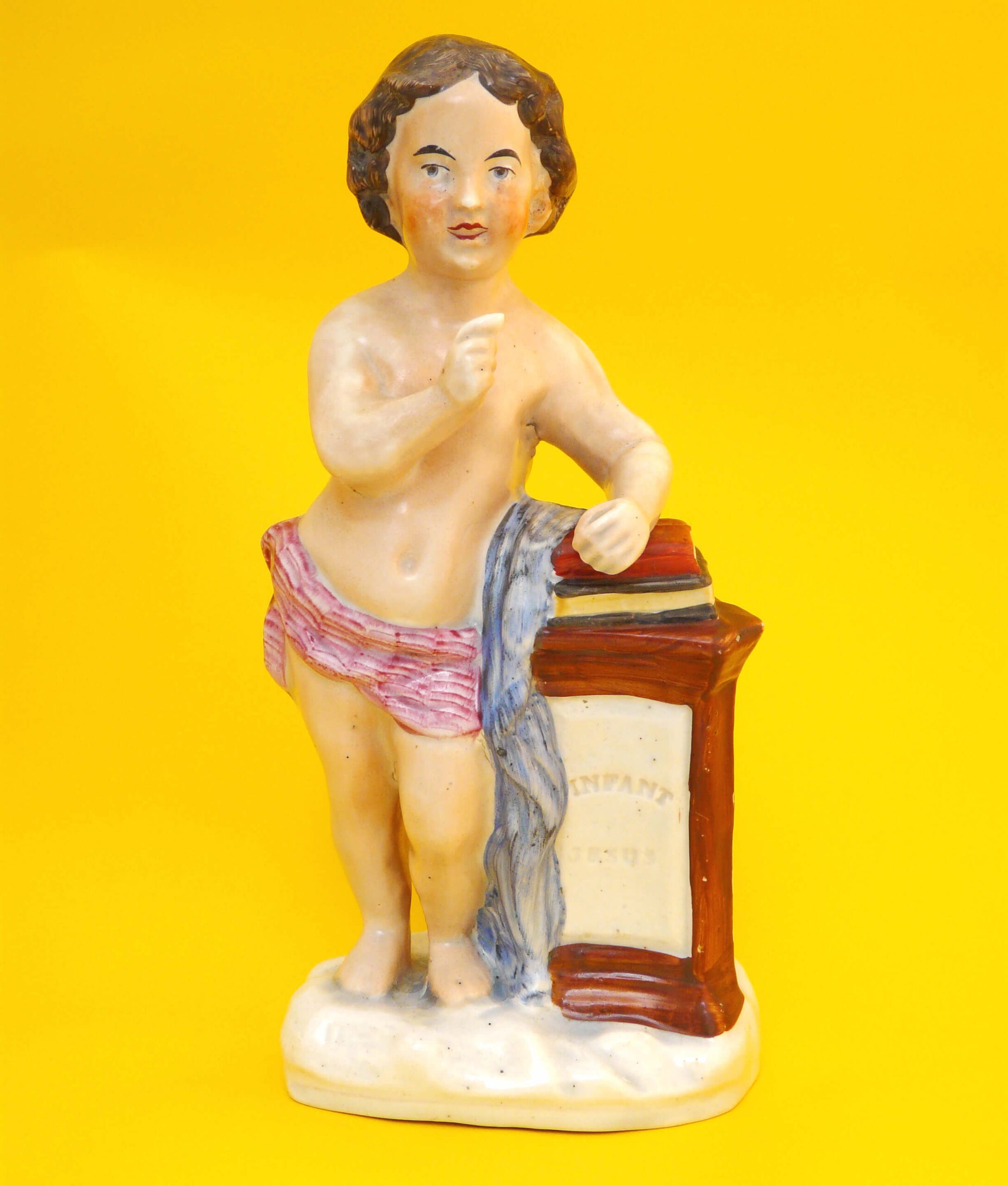
Stephen Duckworth has been collecting Victorian Staffordshire pottery religious figures for 40 years and lives in west London. He gives papers on religious figures and is a regular speaker for many organisations. Stephen Duckworth started his collection with figures of John Wesley and has been a trustee of the heritage site of John Wesley’s Chapel, the New Room in Bristol – the oldest Methodist chapel in the world.
All the Staffordshire pottery figures illustrated in this article are from the period 1840 to the 1870s. They are either in the collection of Stephen Duckworth or were gifted to the Potteries Museum and Art Gallery in Stoke-on-Trent.
Buy Stephen Duckworth’s book Victorian Staffordshire Pottery Religious Figures: Stories on the Mantelpiece, published in 2017, from Postscript Books in the UK or Biblio in the US.


